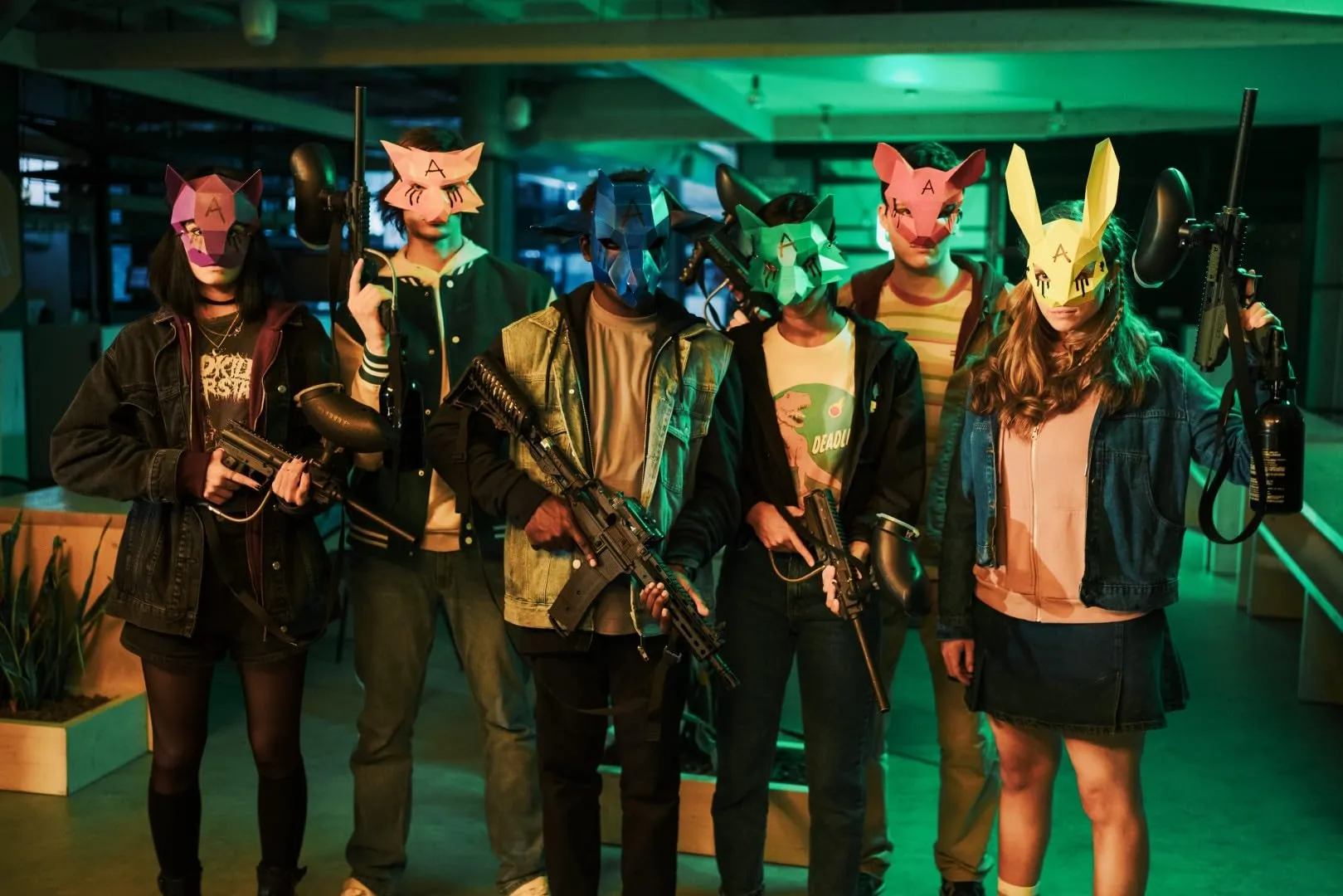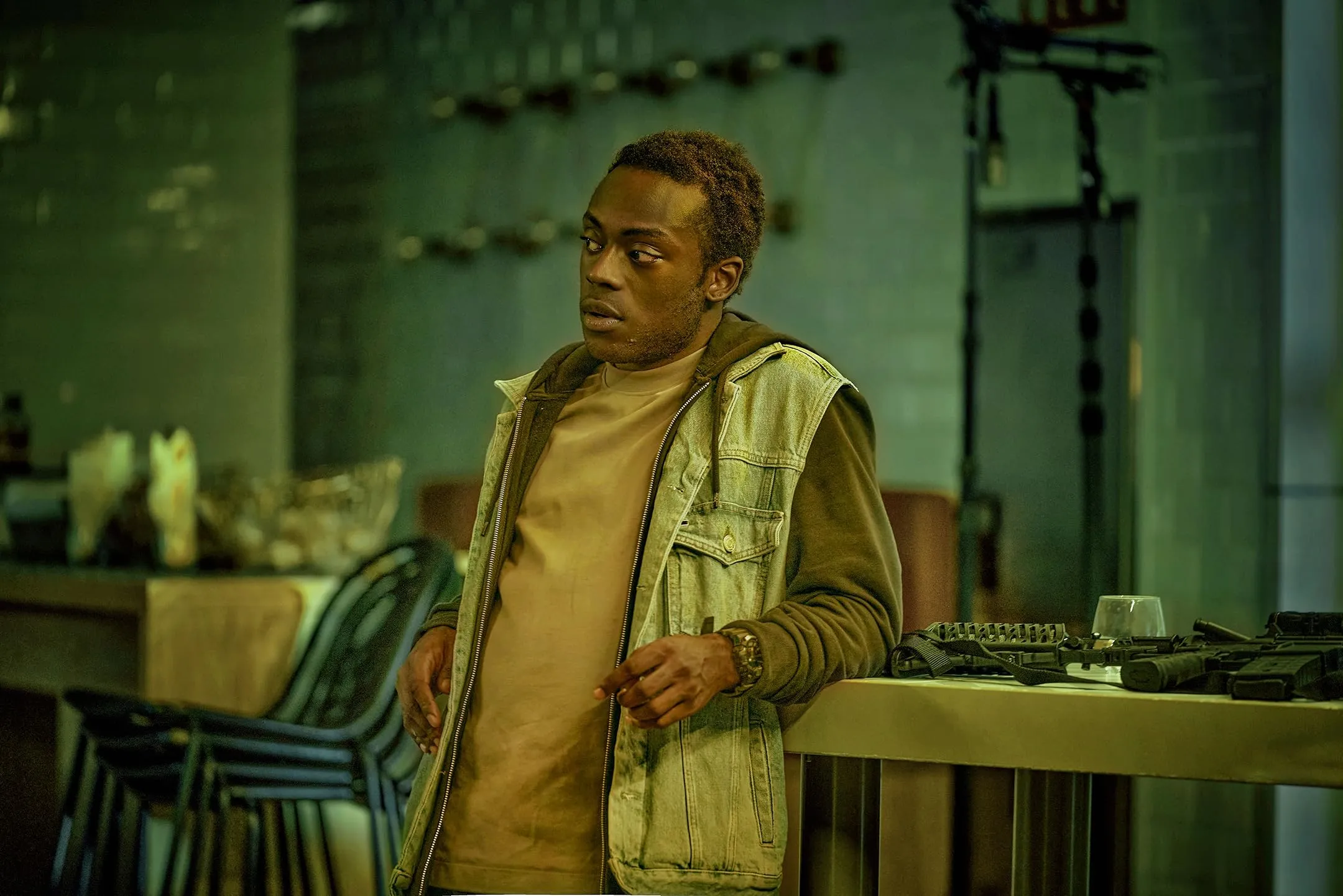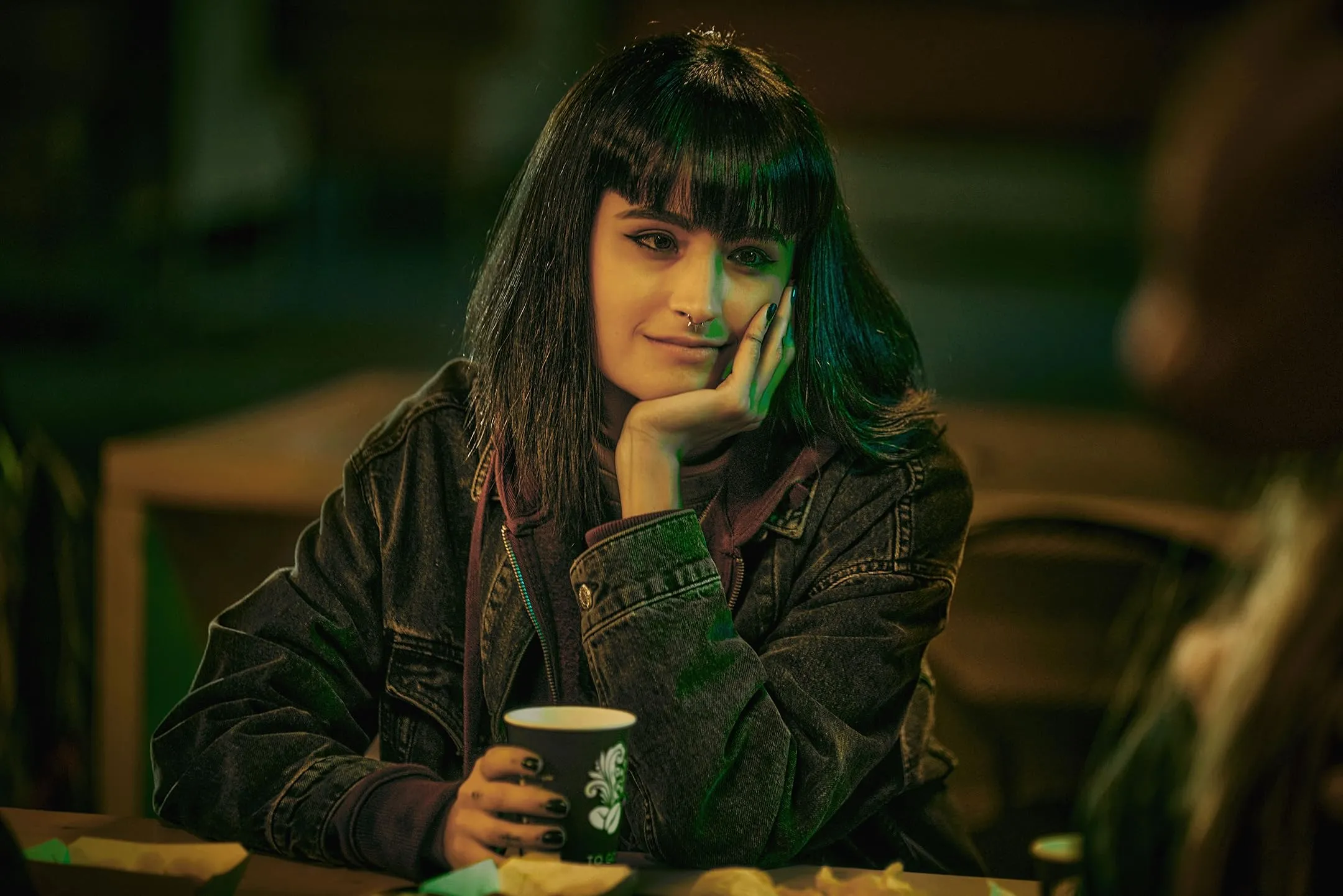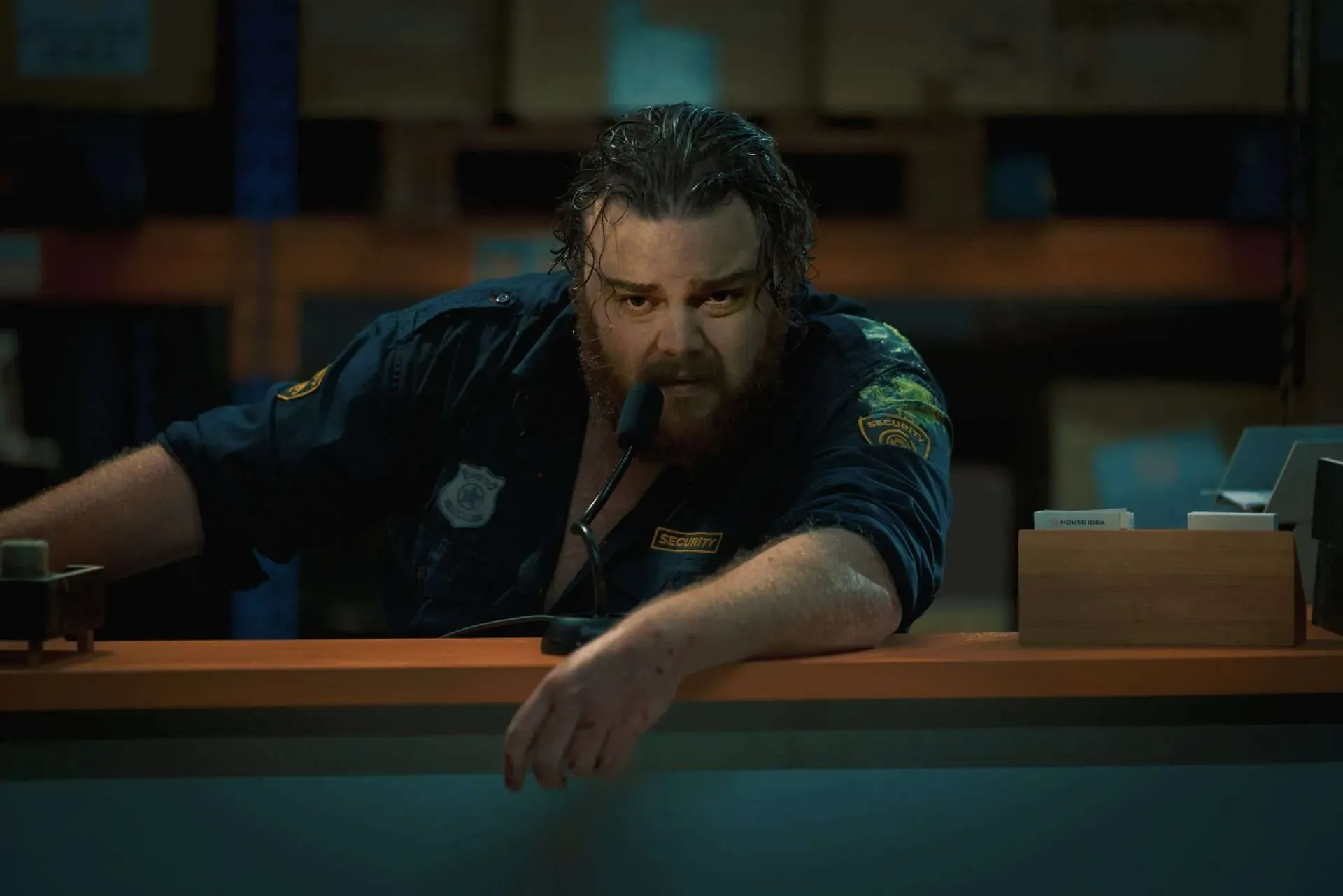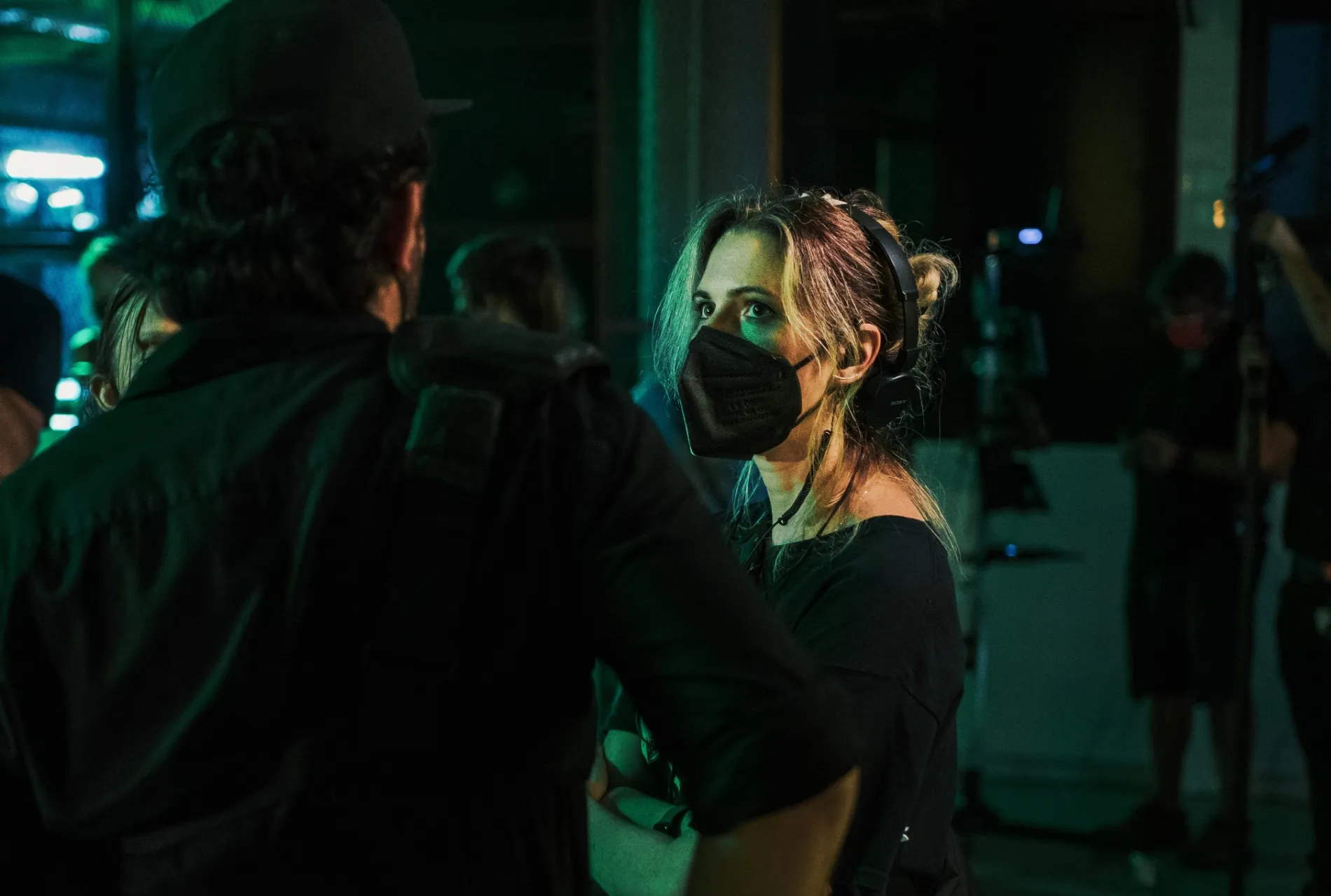The film unfolds in an enormous home goods store that transforms into an arena for a high-stakes contest of survival. The narrative begins with an arresting premise: a band of young animal rights demonstrators enters the store with plans to disrupt corporate practices, only to trigger a relentless pursuit by two security personnel. This setting, with its vast corridors and meticulously arranged displays, serves as a character in its own right, enhancing the claustrophobic tension as events escalate.
The movie carries the pulse of a modern slasher, fusing elements of a suspense thriller with moments that evoke dark humor. The initial calm swiftly gives way to chaos, as the calm of the quiet store is shattered by sudden bursts of violence and an electrifying soundtrack. The rapid pace of the plot keeps the viewer on constant alert, with unexpected shifts that mirror the unpredictability of real life.
I find myself reminded of the raw energy in films by directors like Godard and Truffaut, whose work challenged traditional narrative forms, while also reflecting the sensibilities of contemporary cinema. The film’s use of stark visuals and a driving electronic score crafts a sensory experience that captures both the excitement and the unease of its unfolding events.
Plot and Narrative Structure
The film presents two distinct narrative paths that operate in parallel. On one track, we follow a group of activists as they step into the store with plans that quickly slip from protest to pandemonium.
Their original scheme, intended as a symbolic act, rapidly transforms into chaos after an unexpected alarm sets off a chain of events. This incident sends the tension mounting steadily, with long, hushed moments in the dim corridors of the store that make the forthcoming violence feel even more sudden.
Alongside this, the focus shifts to Kevin, a security guard whose steady routine unravels as his inner turmoil surfaces. Initially portrayed as a figure of duty, his character shifts sharply into a state of unbridled aggression.
This descent is charted with a careful eye, revealing a progression from controlled frustration to a volatile, almost animalistic state. As his actions grow increasingly erratic, the narrative casts a spotlight on the transformation that happens in moments of intense pressure.
The pacing throughout is brisk, yet it allows for carefully measured pauses that let the suspense build in quiet, almost eerie ways. I was reminded of the approach taken by French New Wave filmmakers, whose work often featured long takes that let the camera linger on the details, drawing attention to subtle shifts in mood.
There is a reliance on a series of coincidences that spur the plot forward, which at times raises questions about the plausibility of each twist. Nonetheless, these elements work together to keep the audience engaged as the story pushes from a planned incursion to a shocking outbreak of bloodshed in its final moments.
The screenplay uses repeated motifs and setups that, while predictable in some respects, add a rhythmic quality to the tension. The structure invites viewers to consider both the immediate thrill and the deeper changes occurring within its characters.
Character Development and Performances
The film introduces a group of activists who enter the store with strong intentions, yet their commitment seems surface-level. Their actions, driven by a desire to challenge corporate policies, come off as earnest but lack depth in personal history.
This design means the audience finds it challenging to form a close bond with them. Among this collective, one character, Karim, emerges as noticeably more relatable. His cautious approach and moments of visible vulnerability offer a contrast to the brash attitudes of his peers. The spectrum of emotions—from bold defiance to genuine apprehension—adds a layer of tension to the unfolding events, even if the group’s overall backstory remains underdeveloped.
In stark opposition, the character of Kevin stands out as a force of nature. Starting off as a frustrated employee, his journey toward uncontrollable aggression is portrayed with precision. His methodical construction of traps and the clinical manner in which he pursues his targets create an atmosphere charged with dread.
Kevin’s transformation is central to the narrative, capturing the audience’s attention through a performance that is both chilling and nuanced. His counterpart, Jack, offers a quieter presence, providing a balance that underscores the volatile energy Kevin exudes. Though Jack’s role is more reserved, his interactions with Kevin bring forward the contrasting dynamics of the two characters.
The actors deliver performances that enhance the tension on screen. The lead portraying Kevin infuses his role with a restrained intensity that speaks to the character’s inner turmoil. The interactions among the characters add layers to each scene, keeping the viewer engaged despite the lack of extensive character histories. This balance creates a palpable difference in how the audience perceives the well-defined threat posed by Kevin, while the activists remain more symbolic than fully realized, prompting a complex response from viewers.
Themes and Social Commentary
The film presents a picture of modern activism where the spirit of protest comes off more as a fashion statement than a pursuit with depth. The young demonstrators carry a sense of urgency that appears stylish and fleeting, raising questions about the sincerity behind their acts. Their approach, powered by online trends, seems to focus on appearance and momentary impact rather than long-term change, casting a shadow over their intended purpose.
The home goods superstore serves as a sharp image of our current consumer culture. Its pristine aisles and polished displays stand as a mirror to corporate practices, where efficiency and mass production hide the human cost behind each product. The film uses this setting to point a critical finger at systems that prioritize profit over genuine care for the environment.
There is a striking contrast between the controlled chaos of the protest and the raw, unpredictable behavior of the security guard. His transformation from a tired employee into an almost mythic figure of violent retribution brings forward questions about the triggers of aggression. Is the rage simply an outburst of personal frustration, or does it carry a deeper commentary on repressed emotions in a society under constant pressure?
The irony is clear when a group that claims to fight for life finds themselves facing a force that seems born of the very order they oppose. This tension between surface-level defiance and the harsh reality of physical power highlights a reflective take on how our cultural landscape struggles with genuine change.
Visuals, Direction, and Cinematography
The film makes clever use of its single-location setting, transforming an expansive home goods store into a stage for mounting tension and suspense. The confined corridors and meticulously arranged displays work together to create a feeling of compression, keeping viewers on edge throughout. This choice of setting brings both challenges and opportunities, as the narrative relies on the store’s architecture to sustain a mood of impending dread.
The store’s design is a standout element, with lighting that casts dramatic shadows across its aisles. The interplay of light and dark intensifies key moments and enhances the eerie feel of the narrative. I was reminded of the visual techniques from French New Wave classics, where every frame is carefully composed to serve both the story and the emotional landscape. Certain scenes, where the camera lingers on the interplay between artificial brightness and encroaching darkness, manage to heighten the tension effectively.
The directors employ varied camera angles, mixing close-ups, steady tracking shots, and wide views to capture the constant movement within the store. Their choices in framing capture the urgency of the chase and the isolation of each character.
The film’s practical effects are executed with precision; the choreography in the violent sequences stands out, lending a tactile quality to the on-screen mayhem. Makeup and set effects work together to give the blood and gore a palpable realism.
Anouk and Yoann-Karl Whissell show a clear vision in their balance of stylish visuals with the stark brutality of the narrative, crafting a look that fits snugly within the modern, gritty slasher landscape.
Soundtrack and Score
Arnau Bataller’s score pulses with a relentless energy that mirrors the film’s quick pace. The electronic rhythms set a brisk tempo that sharpens the tension during moments when silence should feel heavy. Each beat underscores scenes of sudden chaos, making the store’s quiet corridors seem filled with unspoken threat.
The composition works tightly with the visuals, with synthetic pulses that echo through the confined spaces of the superstore. I noticed how specific sequences, where the light shifts or a chase unfolds, are matched by shifts in the music that push the atmosphere into a charged state.
This connection recalls the work found in classic horror soundtracks that used driving beats to mark crucial turns. The score manages to capture both a sense of urgency and a hint of menace, drawing attention to the film’s blend of technical precision and raw, visceral impact.
Final Moments and Overall Impact
Approaching the film’s climax, viewers experience a surge of unforeseen violence that disrupts the preceding rhythm. The sudden intensification of brutality shocks the audience, reshaping the narrative’s tone in a way that provokes strong reactions. During the final scenes, the carefully constructed pace is broken by moments of raw, unrestrained action. These sequences present vivid displays that compel the viewer to face the unfolding chaos head-on.
The shift in tone leaves a striking impression, inviting reflection on the stark differences between the calm of earlier events and the explosive finale. The unpredictable turn of events raises questions about personal responsibility and the cost of defiance.
Each moment of carnage is timed with precision, capturing the fleeting nature of terror and adrenaline. The film’s last minutes stand as a bold statement that challenges familiar expectations. Its memorable sequences and assertive visual choices continue to resonate, provoking a mix of excitement and disquiet that lingers with the audience.
The intensity of these scenes and the arresting changes in rhythm define the film’s enduring impact on those who witness it. This finale reconfigures the film’s identity, leaving a persistent mark that invites viewers to rethink familiar narratives and question established modes of violence and spark fresh debate.
The Review
Wake Up
Wake Up is a daring ride that reinterprets familiar horror elements through fresh narrative twists and a meticulously crafted setting. The film’s striking visuals and driving score inject a palpable energy, while its jolt-inducing finale leaves a lasting mark. Although its characters sometimes come off as one-dimensional, the bold approach and technical precision deliver an engaging experience that challenges expectations.
PROS
- Striking visuals and atmospheric setting
- Innovative narrative twists
CONS
- Underdeveloped characters
- Some narrative coincidences









































